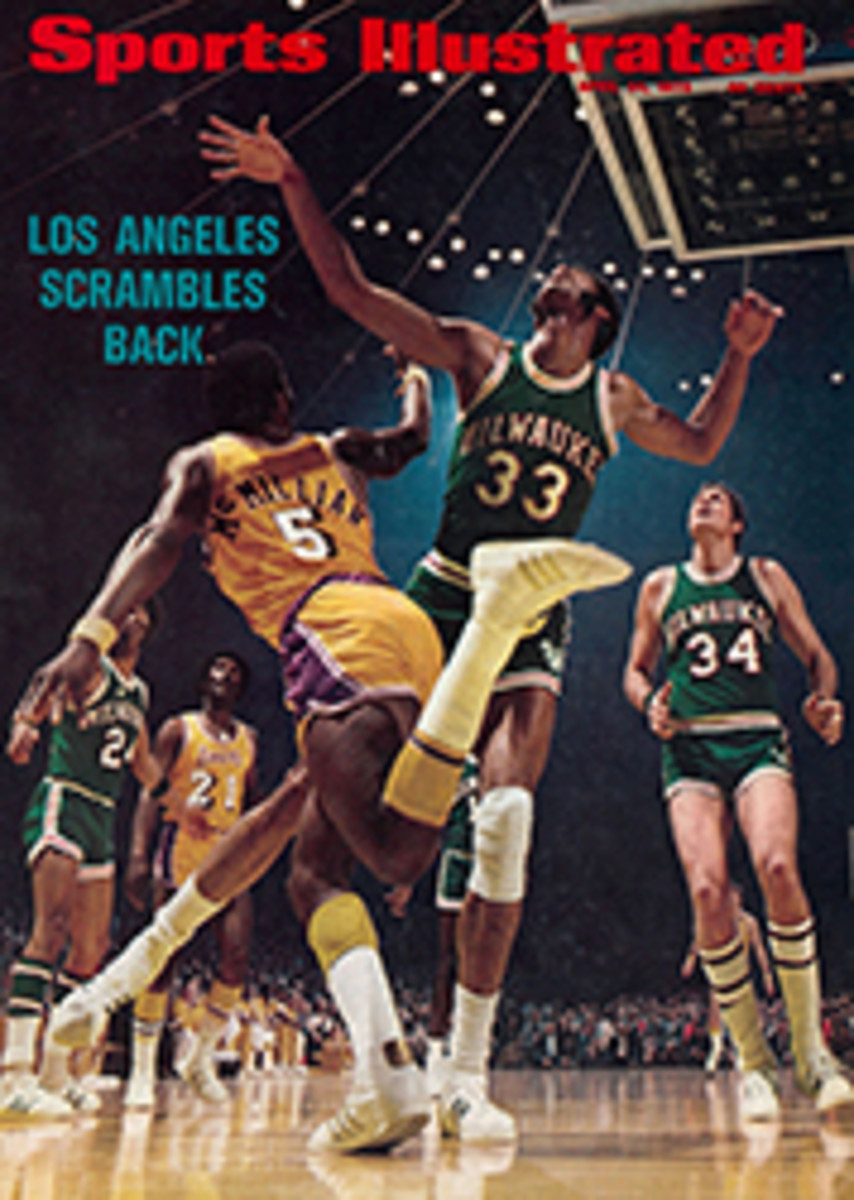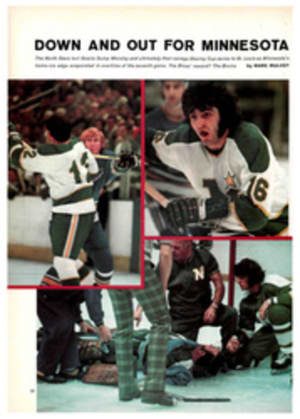
'Tis far better to waste than be wasted
Foilsmen never fully master their weapon. In many respects, pursuing perfection in this most subtle of the fencing arts is like chasing a mechanical rabbit. When the race ends there is only the frustration. Often, particularly for foilsmen under the age of 30, there isn't even victory. It is widely believed that one must be at least 30 before one begins to understand the techniques.
But now a prodigy—American in a world dominated by Europeans, black where the best have almost always been white, and only 22—has come along. He is Tyrone Simmons of the University of Detroit and many regard him as the most promising fencer to be developed in this country in the last decade. He seems fully aware of those refinements of style that must be mastered to attain world-class stature. Simmons has yet to reach the final round in an international meet, but his coach, Dick Perry, says, "If the United States wins a gold medal in Olympic fencing in the next dozen or so years, Simmons will be the reason."
Simmons has won plenty of matches at home. He has, in fact, cleaned up. Second to two older and far more experienced foilsmen in each of the last two national tournaments, he easily should do as well this July in Boston and make the U.S. Olympic squad. His most sparkling performance came last month in the NCAA tournament in Chicago when he did just about everything but carve "Ty" on an opponent's chest protector. He won all 23 bouts, 10 by shutout, and was never extended. Only 32 touches went against him to the 115 he made. Because of Simmons and his teammates, Fred Hooker (épée) and Ken Blake (saber), Detroit ran up 73 points to become the first non-Eastern school to win the collegiate team title since Illinois in 1958. NYU and Columbia, the perennial powers, were three and seven points behind the Titans.
"He was ready and we all knew it," said teammate Lynnderek Leonard. "He would go on the strip, waste someone, wait his turn again and waste someone else. He was beating the good fencers the way he beats me in practice."
The surprising thing about Leonard's observation is that he sounded surprised. In practice, Simmons has always fenced exactly as he does in matches—sustaining his concentration despite the emotional hills and valleys of competition, sitting quietly between bouts, analyzing his last performance, planning his next. Often he will test one of his teammates on épée or saber. "I don't believe in taking it easy," he says. "If I'm going to put in time, I want to get the most from it."
Simmons becomes somewhat aloof in dual meets and tournaments and his teammates know enough not to break his mood. Even when he has to work through an ordeal such as the NCAA's 23 bouts in a span of three days, he primes himself for each the way a football player gets up for the week's game. His manner is businesslike as he takes the strip. He begins immediately to stalk his opponent, probing, testing for a weakness that he can exploit. Speed and balance are his strengths and he uses them to get an opponent to overcommit himself. Once Simmons gains that edge, there is little the other foilsman can do but respond weakly and await the inevitable. It is just a matter of time until Simmons has his five touches.
In the NCAAs, Hooker and Blake were selected for All-America honors by the coaches. Hooker had a 16-7 record and Blake was 19-4, including a 5-4 win over Columbia's Bruce Soriano, the only loss in 23 bouts for the three-time NCAA saber champ. As for Simmons, for the second year running he was voted the outstanding fencer of the meet.
Simmons, Hooker and Blake all came to the University of Detroit from Philadelphia, where they learned their fencing under Jim Moss at Benjamin Franklin High School. (Moss and his fencers refer to the school as Malcolm X, a name adopted by the black community but not officially recognized by the Board of Education.) "Jim Moss had everything to do with their development," says Perry. "He opened the world to them. I am interested in anyone who has learned from Moss because he does more than develop fencers. He works on the whole man."
In a city where the schoolboy exploits of a Wilt Chamberlain or an Earl Monroe are known to all, Moss has had trouble convincing anybody of his own sport's worth. "Tyrone Simmons is as fine an athlete in fencing as Willie Mays and Henry Aaron are in baseball or Jimmy Brown was in football," he says. Naturally, nobody listens. But Moss does not give up. He talks, seemingly incessantly, about Simmons. One of his students once told him, "Tyrone is just a figment of your imagination." The next time Simmons was in town, Moss lined up the student and 11 other fencers and told Simmons to prove himself. Simmons did, defeating each of them, one by one. Then Daddy J, as Moss is called, asked: "Whose imagination?"
Four years ago Moss started the Afra Fencers Club to give his students a year-round base of operations. He gets some financial aid from civic groups but he has always paid his dues along with everybody else. Simmons remembers the times when he couldn't afford to go to meets. "But Daddy J and I would go anyway," he says. "He reached into his pocket and paid the bills."
A Temple University graduate who teaches in the ARD Self Help Educational Center, Moss has as many as 85 athletes who turn out for fencing annually at Malcolm X. He has never dropped one from the squad. "They are all welcome," he says. "I work them hard, but there are never any hard feelings when someone quits."
Under Moss, the school has won four state and five city titles and was once unbeaten through 33 dual meets. Simmons and Blake had a tactic for any classmate who thought fencing was a sissy sport. Blake says, "We would get one of them to challenge us, take him out on the strip and tear him up."
Before taking up fencing eight years ago, Simmons considered himself an artist. "But once I found fencing, I went five years without picking up a brush," he says. He is an art and phys ed major at Detroit now with an interest in either commercial art or teaching. A large still life, his own, dominates the traffic in his room. But recently he turned to the camera—because of fencing. To solve a Soviet technique he came up against in Turin, Italy, Simmons, with the help of an American teammate, filmed the Russian fencer who had defeated him and held a few dozen private screenings when he returned to the States. Simmons met the Russian later and won.
"Tyrone is an international sponge," Moss says. "Any great athlete has the creativity. He learns what he needs in international meets and teaches it to his teammates in practice."
Simmons has found that European fencers take shorter steps for better balance and are more subtle in their hand movements than Americans. Perry says, "Once Tyrone identifies a problem, he solves it. He will say, 'This cat is doing such and such,' and he prepares for their next bout. I have never seen an indication of his limit. He is imaginative and analytical and the only thing he needs to become a world-class fencer is experience."
Most coaches believe that a fencer must first have experience at a level before he can expect to win at that plateau of his development. Moss doesn't agree. "Whatever you accomplish at any level is just a matter of doing it when you get there," he says. He has a firm advocate in Simmons. "I believe I am the best and if someone is going to beat me he will have to prove it. But don't think I'm going to wait around until he does. If fencing were reality, each touch against me would mean that I had been wounded or killed. I don't like being killed." Especially by someone over 30.
PHOTO
PENSIVE SIMMONS READIES FOR A BOUT

